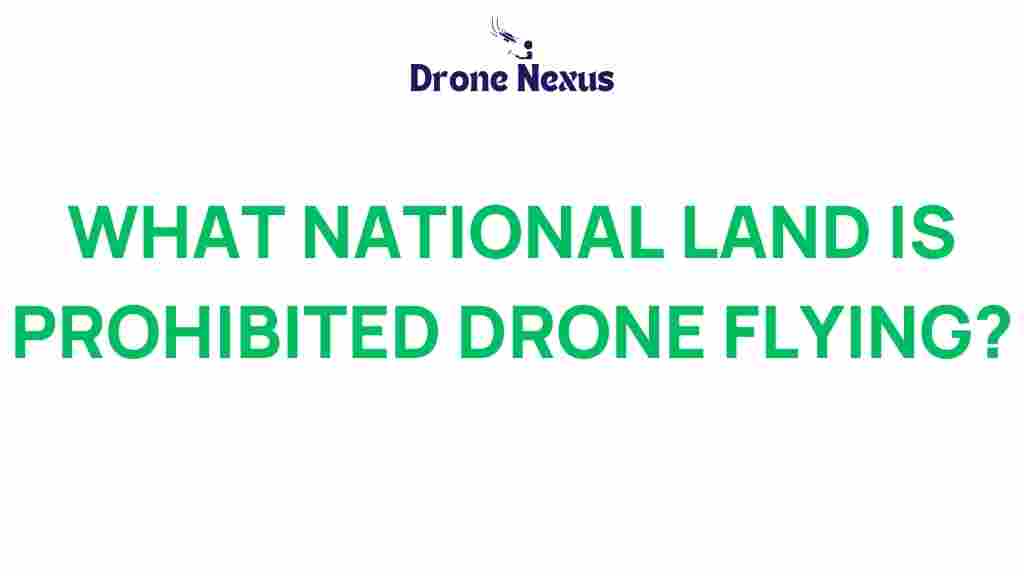Drone Flying: Understanding Where It Is Strictly Prohibited
In recent years, drone flying has gained immense popularity among hobbyists, photographers, and professionals alike. However, not all areas are suitable for drone operations. There are strict regulations regarding where drone flying is prohibited, often for safety, privacy, and security reasons. This article will unveil the secrets behind these restrictions, helping you navigate the complex landscape of drone regulations and avoid potential penalties.
The Importance of Understanding Drone Regulations
With the rise in drone usage, understanding the regulations surrounding drone flying is essential. Here are some key reasons why:
- Safety: Drones can pose risks to manned aircraft if not operated in designated areas.
- Privacy: Drone flying over private properties can infringe on individuals’ privacy rights.
- Security: Many government and military installations prohibit drone flying to protect national security.
Common Restrictions on Drone Flying
Drone flying is typically restricted in various locations, and understanding these areas can save you from legal troubles. Here’s a detailed look at some common places where flying drones is strictly prohibited:
1. Airports and Airfields
One of the most critical restrictions on drone flying is near airports and airfields. The Federal Aviation Administration (FAA) in the United States, for example, prohibits drone operations within a five-mile radius of airports without prior notification to the control tower. This rule is in place to ensure the safety of manned aircraft during takeoff and landing.
2. National Parks
Drone flying is generally not allowed in national parks. The National Park Service (NPS) has strict regulations to preserve the natural environment and the experience of visitors. If you’re considering capturing stunning landscapes, it’s best to check the specific park regulations beforehand.
3. Military Bases
Drone flying near military installations is heavily restricted. These areas often have high-security protocols in place, and unauthorized drone flights can lead to severe consequences. Always be aware of your surroundings and avoid flying near military facilities.
4. Crowded Public Events
Flying drones over large gatherings, such as concerts, festivals, or sporting events, is usually prohibited. This restriction is in place to ensure public safety and to avoid potential accidents or disturbances. If you’re interested in aerial photography of such events, seek permission from the event organizers.
5. Wildlife Reserves
Many wildlife reserves and sanctuaries have specific restrictions against drone flying. Drones can disturb wildlife and disrupt their natural behaviors, which is why these areas often enforce strict no-fly policies. Always research the regulations of the specific reserve you plan to visit.
6. Urban Areas
In many cities, drone flying is subject to strict regulations to prevent accidents and invasions of privacy. Some urban areas have designated no-fly zones, and it’s essential to check local laws before launching your drone in a city environment.
How to Check Local Drone Regulations
Before embarking on your drone flying adventures, it’s crucial to be aware of the local regulations. Here’s a step-by-step process to help you stay compliant:
Step 1: Research National Regulations
Start by familiarizing yourself with the national regulations governing drone flying. In the U.S., the FAA provides comprehensive guidelines that all drone operators must follow. Similar governing bodies exist in other countries, such as the European Union Aviation Safety Agency (EASA) in Europe.
Step 2: Utilize Online Resources
There are several online resources available to help you check for restricted areas:
- FAA’s official website provides up-to-date information on drone regulations.
- Apps like B4UFLY can help you identify no-fly zones based on your location.
- Local government websites often have specific regulations for drone flying within their jurisdiction.
Step 3: Consult Local Authorities
If you’re unsure about specific regulations, consider reaching out to local authorities or law enforcement agencies. They can provide guidance on where drone flying is allowed and where it is prohibited.
Step 4: Join Drone Communities
Engaging with local drone communities can also be beneficial. Many enthusiasts share knowledge about local regulations and can provide tips on safe flying practices. Online forums, social media groups, and local clubs are great places to connect with fellow drone pilots.
Troubleshooting Common Issues in Drone Flying
Even with a solid understanding of where drone flying is prohibited, you may encounter issues while operating your drone. Here are some common problems and troubleshooting tips:
Problem 1: Lost GPS Signal
If your drone loses its GPS signal, it may become unstable. To troubleshoot this:
- Move to an open area away from tall buildings or trees.
- Ensure your drone’s firmware is up to date.
- Restart your drone and controller to re-establish the connection.
Problem 2: Drone Not Responding
If your drone is unresponsive, try the following:
- Check the battery levels of both the drone and the remote controller.
- Ensure that the drone is within the range of the controller.
- Reset the controller and reconnect to the drone.
Problem 3: Camera Issues
For drones equipped with cameras, you may encounter issues with image quality or connectivity. Here are some tips:
- Check the camera lens for dirt or obstructions.
- Ensure that the camera settings are correctly configured.
- Update the drone’s software to resolve any software-related issues.
Conclusion
Understanding where drone flying is strictly prohibited is crucial for safe and responsible operation. By familiarizing yourself with local and national regulations, utilizing available resources, and engaging with fellow drone enthusiasts, you can enjoy the thrilling experience of drone flying while adhering to the law. Remember, the sky is vast, but it’s essential to fly responsibly and respect the guidelines set forth to ensure safe, enjoyable drone flying experiences for everyone.
For more information on drone regulations, visit the FAA’s official website. Happy flying!
This article is in the category Safety and created by DroneNexus Team
